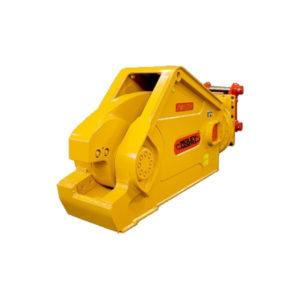Railbreakers: Transforming Maintenance
Introduction
Railbreakers play a fundamental role in railway infrastructure, as they facilitate not only track maintenance but also various rail construction, maintenance and demolition activities. These powerful attachments are equipped with safety features to ensure the protection of operators and maintenance crew during operation. Their precision and force allow controlled rail cutting or breaking, making them essential tools in the hands of experienced professionals.
The use of railbreakers has transformed the efficiency of railway maintenance, allowing for quicker repairs and upgrades. Their versatility and robustness makes them indispensable in the ever-evolving landscape of transportation infrastructure, contributing to the safety and functionality of railway systems across the globe.
Evolution of Railbreaking Technology
The history of railbreakers traces back to the industrial revolution, where basic tools were initially employed to dismantle, maintain, and re-lay railway tracks. Over time, technological advancements have led to the development of advanced and powerful railbreaking equipment.
In the mid-20th century, hydraulic railbreakers emerged, revolutionizing the rail maintenance industry. These innovations drastically improved the efficiency and safety of track maintenance, setting the stage for further technological advancements.
Market Growth
The railbreaker industry has experienced remarkable growth in recent years, owing to the increasing demands in railway maintenance and infrastructure development. With the expanding railway networks worldwide, the need for efficient railbreaker technology has become evident. This growth is expected to continue as global transportation and delivery of goods expands and the need for effective track maintenance increases.
Environmental Impact
As environmental concerns grow, the industry has responded with eco-friendly railbreaker models. Manufacturers are increasingly focused on developing equipment that minimizes environmental impact by reducing emissions and noise pollution.
Sustainable Practices
Apart from eco-friendly models, the industry is also embracing sustainable practices in railbreaker operations. These practices include the use of biodegradable hydraulic fluids, energy-efficient systems, and the adoption of recyclable materials in manufacturing, aiming to reduce the overall carbon footprint.
Conclusion
In summary, railbreakers are necessary in railway construction, maintenance, and demolition. The evolution of these powerful machines, their diverse applications, and the positive impact on safety and efficiency continue to drive the industry forward. As technology progresses, the future of railbreakers promises even greater advancements and a positive shift in the way we manage our rail systems.
See the Moley Magnetics & Equipment Railbreaker on YouTube


